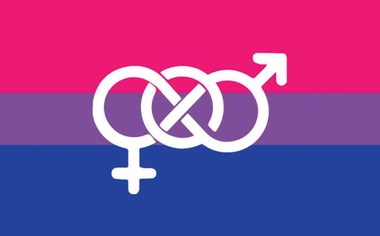“First seek to understand”

by Mary Turner
HIV/AIDS Health Columnist
“Fair is foul, and foul is fair” (Act I, Scene I, Macbeth: William Shakespeare). This seemingly simple quote from a Shakespearean drama illustrates the complexity of the human existence. Nothing is as simple as it seems, and you can’t tell just by looking at someone who he/she really is.
People who identify as bisexual, having a sexual attraction to both the same and the opposite sex partner, may live every day of their lives with close scrutiny and incredulity that they do indeed feel such attraction. Anecdotally, I have heard individuals who identify as gay and those who identify as straight assert that those who proclaim to be bisexual “must really just be confused.” Or “they are gay, but are in denial.”
The emphasis on false dichotomies in our culture only reinforce the idea that a person must be either/or. The reality is that most things in life, including our sexuality, fall along a continuum. The range of sexual possibilities includes the asexual person who feels no physical/sexual arousal toward anyone all the way over to the pansexual person who can be aroused by persons of either sex, by any gender identity or by inanimate objects.
According to a March 6, 2014 GLAAD blog by Alexandra Bolles, strategist for the Bisexual Resource Center (BRC), the biphobia that many people express ultimately leads to identity erasure for bisexual persons. This erosion of who they are contributes to higher incidences of anxiety, depression and other mood disorders in comparison to persons who identify as straight, gay or lesbian.
In fact, a study published by the San Francisco Human Rights Commission in 2010 found that the number of bisexual men who reported feeling suicidal was 6.3 times higher than among gay and lesbian persons. The number of bisexual women who reported feeling suicidal was 5.9 times higher. The BRC has identified the top ten health concerns for bisexual persons to be tobacco use, substance use, alcohol use, cancer, sexual health, nutrition and physical health, heart health, depression and anxiety, social support/emotional well-being, self-harm and suicide attempts.
Our sexuality is an important component of who we are, but it is only one component. Bisexuals are people, as are heterosexual, gays, lesbians and every other color in the rainbow. Each person’s attraction to others doesn’t have to be equal, and showing a preference for same sex or opposite sex persons doesn’t make that person really “straight” or “gay”. It just makes her or him human.
In the words of Stephen Covey, “First seek to understand.”
Copyright 2016 The Gayly – September 22, 2016 @ 11:30 a.m.





